12 Oct 5 High-Risk Areas for Compliance
With the ever-evolving Government Risk Management and Compliance (GRC) domain, businesses and their compliance departments need to keep up with the pace. Certain compliance risks present a higher risk factor for the corporate sector.
Top 5 High-Risk Areas for Compliance Issues
Here are the five compliance risks that businesses and their compliance officers must focus on:
1. Political Uncertainty May Trigger Regulatory Changes
The political shift can impact the regulatory and legislative landscape slightly. However, political voice and rhetoric, such as in support of retail investor and consumer protection or against the large banks, can surely stir things up.
Thus, you, as a business, must not ignore any international political and regulatory events. For instance, the E.U.’s GDPR took effect in 2018 and serves as a model for U.S. regulations for cybersecurity and data privacy.
2. Cyber Security and Data Protection
The technological evolution has brought its own complexities and compliance risk. It can be difficult for businesses to stay on top of these challenges persistently—however, areas such as data protection and cybersecurity rank amongst the greatest concerns in the compliance arena.
Your compliance officers do not need to become tech experts. But, they must ensure the implantation of regulations for data protection and cybersecurity issues.
3. Conflicts of Interest and External Business Activities
Conflict of interest is one of the major issues in most multinational companies. Moreover, it is common for most companies to prohibit their employees from all outside activities that may raise concerns for conflict of interest.
No matter what size your company is, both these areas can create problematic compliance issues. Thus, compliance officers must educate the staff extensively on the conflict of interest company policy.
4. OHSA or Safety Compliance
All employers must comply with the Occupational Safety and Health Act (OSHA) 1970. The act obligates employers to provide a healthy and safe workplace to all workers at their facilities. OSHA standards may require you as an employer to adopt specific health and safety practices, methods, means, or processes.
A serious violation of OSHA compliance regulations may cost an employer a penalty of up to $7,000, whereas a willful violation may cost between $5,000 and $70,000.
5. EEOC Compliance
The Equal Employment Opportunity Commission (EEOC) is a federal U.S. agency that defends employees against discriminatory acts based on color, race, religion, gender, age, nationality, disability, etc. The act also covers discrimination during hiring, firing, harassment, promotion, wages, training, benefits, etc.
Any organization with more than 15 employees must comply with EEOC laws. The EEOC requires employers to maintain records of applications against a job posting for up to a year. `
An employer found non-compliant with the EEOC rules may get more than just a slap on the wrist. EEOC is a federal organization with the power to sue a non-compliant employer and defend the workers’ civil rights.
Aim for Early Identification
Compliance officers and departments are becoming more vigilant to spot potential compliance issues and risk areas in their earlier stages. It helps them detect and deter the problematic activities before the regulatory authorities do. Therefore, you must deploy similar early detection protocols within your organization to avoid severe compliance infraction and penalties.
Making sure your business does not have any compliance risks. Talk to us today for a free consultation.
To find out more, contact one of our talented Risk Advisors today!


No Comments